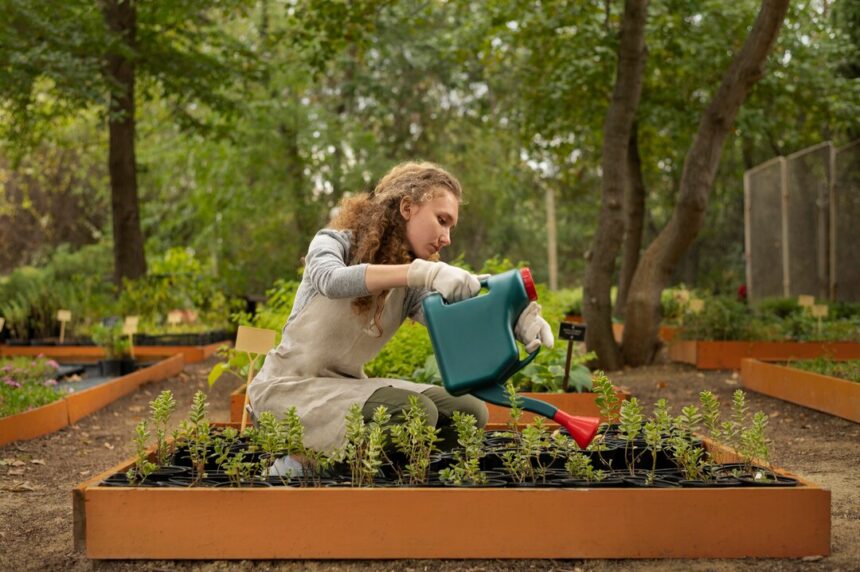Community gardens offer South African farmers and communities a sustainable way to grow fresh produce, promote food security, and foster social connections. However, starting and managing a community garden can present unique challenges. Avoiding common mistakes can help ensure the garden thrives and serves its purpose effectively. Here are ten common mistakes to avoid when starting a community garden and how to address them.
1. Lack of Clear Goals
Many community gardens fail because they start without clear objectives. Is the goal to grow food for community members, support local markets, or promote environmental education?
- Solution: Define the garden’s purpose before starting. This helps guide planning, design, and operations while ensuring all participants are aligned with a common vision.
2. Poor Site Selection
Choosing the wrong location can limit a garden’s productivity. Issues like poor soil quality, inadequate sunlight, or lack of water access can hinder plant growth.
- Solution: Select a site with at least six hours of sunlight daily, access to water, and fertile or improvable soil. Test the soil for contaminants and nutrient levels before planting.
3. Inadequate Community Involvement
A community garden requires active participation, but many gardens fail because few people are genuinely invested.
- Solution: Involve the community from the start. Host meetings, gather input, and ensure the garden reflects the needs and preferences of local participants.
4. Lack of a Garden Plan
Starting without a clear plan often leads to disorganized gardens with uneven growth, wasted space, and inefficient water usage.
- Solution: Create a detailed garden plan. Decide on plot sizes, crop placement, irrigation methods, and pathways. Incorporate crop rotation and companion planting into the design.
5. Overlooking Funding Needs
Community gardens require tools, seeds, compost, fencing, and water. Ignoring these costs can stall progress.
- Solution: Estimate costs upfront and create a budget. Seek funding through local government programs, grants, or sponsorships from businesses. Organize fundraising events to supplement income.
6. Ignoring Water Management
Water scarcity is a major challenge in South Africa, and community gardens often struggle without a proper water plan.
- Solution: Install water-efficient systems like drip irrigation or rainwater harvesting. Educate participants on water-wise gardening practices, such as mulching to retain soil moisture.
7. Planting the Wrong Crops
Planting crops that are unsuitable for the local climate or soil can result in poor yields and participant frustration.
- Solution: Choose crops suited to the local conditions. Opt for hardy, drought-resistant varieties and seasonal vegetables like spinach, carrots, and cabbage. Incorporate indigenous plants where possible.
8. Overlooking Pest and Disease Management
A lack of pest and disease management can quickly destroy crops, discouraging participants.
- Solution: Use organic pest control methods like crop rotation, companion planting, and introducing natural predators. Educate gardeners on identifying and addressing common pests and diseases early.
9. Failing to Establish Rules and Roles
Without clear rules and assigned responsibilities, conflicts can arise, and essential tasks may be neglected.
- Solution: Create a governance structure for the garden. Establish rules for plot allocation, maintenance, harvesting, and communal tool usage. Assign roles, such as garden coordinators, treasurers, and educators, to ensure smooth operation.
10. Neglecting Long-Term Sustainability
Many community gardens are successful initially but fail due to poor maintenance or participant turnover.
- Solution: Focus on sustainability from the beginning. Encourage composting to reduce costs, use renewable resources, and create a succession plan to maintain the garden as participants come and go.
Tips for Success in Community Gardening
- Education and Training: Provide regular workshops on gardening techniques, pest management, and sustainable practices.
- Community Events: Host events like harvest festivals or cooking demonstrations to keep participants engaged.
- Documentation: Keep records of planting schedules, expenses, and successes to guide future efforts.
- Collaboration: Partner with local schools, NGOs, and agricultural organizations for resources and support.
- Regular Meetings: Schedule meetings to address concerns, share updates, and ensure everyone is informed and involved.
Starting a community garden can transform underutilized spaces into thriving hubs of activity, food production, and community building. By avoiding common mistakes like poor planning, inadequate water management, and lack of community involvement, South African farmers can create sustainable and productive gardens that benefit everyone. With the right strategies and a commitment to collaboration, community gardens can become powerful tools for improving food security and strengthening community ties.
Join 'Farmers Mag' WhatsApp Channel
Get the latest Farming news and tips delivered straight to your WhatsApp
CLICK HERE TO JOIN






